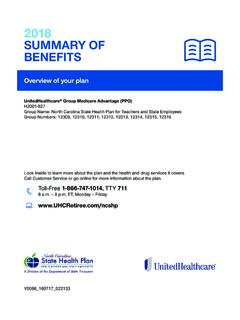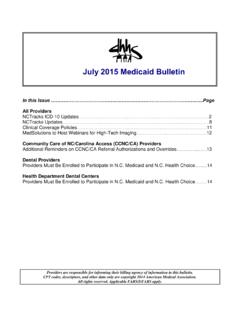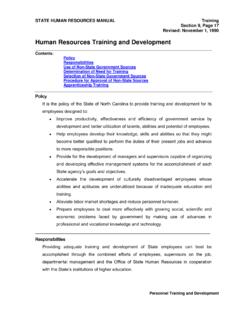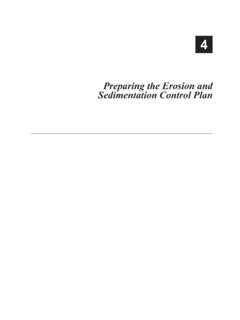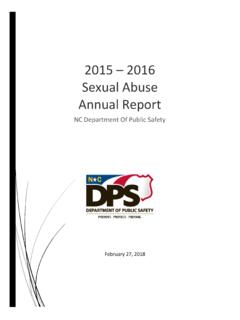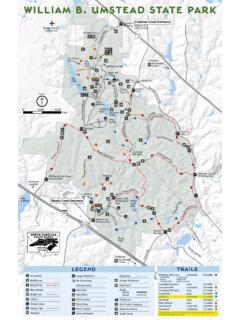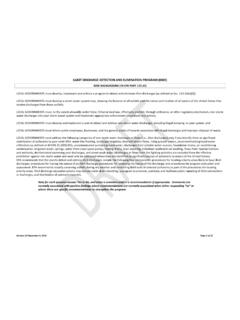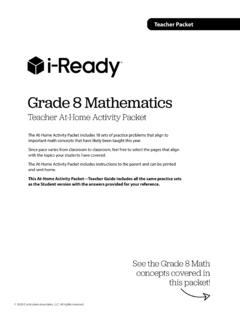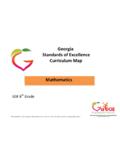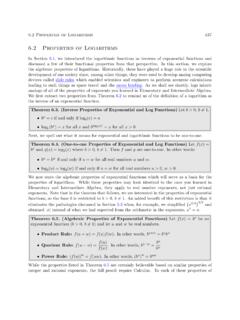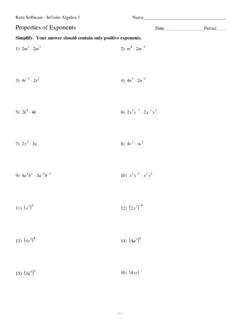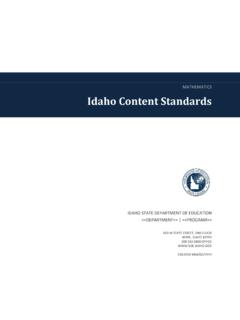Transcription of 8th Grade Mathematics Unpacked Contents
1 8th grade Mathematics Unpacked Contents For the new Standard Course of Study that will be effective in all North Carolina schools in the 2018-19 School Year. This document is designed to help North Carolina educators teach the 8th grade Mathematics Standard Course of Study. NCDPI staff are continually updating and improving these tools to better serve teachers and districts. What is the purpose of this document? The purpose of this document is to increase student achievement by ensuring educators understand the expectations of the new standards. This document may also be used to facilitate discussion among teachers and curriculum staff and to encourage coherence in the sequence, pacing, and units of study for Grade -level curricula. This document, along with on-going professional development, is one of many resources used to understand and teach the NC SCOS.
2 What is in the document? This document includes a detailed clarification of each standard in the Grade level along with a sample of questions or directions that may be used during the instructional sequence to determine whether students are meeting the learning objective outlined by the standard. These items are included to support classroom instruction and are not intended to reflect summative assessment items. The examples included may not fully address the scope of the standard. The document also includes a table of Contents of the standards organized by domain with hyperlinks to assist in navigating the electronic version of this instructional support tool. How do I send Feedback? Please send feedback to us at and we will use your input to refine our unpacking of the standards.
3 Thank You! Just want the standards alone? You can find the standards alone at NC Department of Public Instruction 8th grade Unpacking Document Rev. June 2018 2 North Carolina 8th grade Standards Standards for Mathematical Practice The Number System Expressions & Equations Functions Geometry Statistics & Probability Know that there are numbers that are not rational and approximate them by rational numbers. Work with radicals and integer exponents. Analyze and solve linear equations and inequalities. Analyze and solve pairs of simultaneous linear equations. Define, evaluate, and compare functions. Use functions to model relationships between quantities. Understand congruence and similarity using physical models, transparencies, or geometry software.
4 Analyze angle relationships. Understand and apply the Pythagorean Theorem. Solve real-world and mathematical problems involving volume of cylinders, cones, and spheres. Investigate patterns of association in bivariate data. NC Department of Public Instruction 8th grade Unpacking Document Rev. June 2018 3 Standards for Mathematical Practice Practice Explanations and Examples 1. Make sense of problems and persevere in solving them. In Grade 8, students solve real world problems through the application of algebraic and geometric concepts. Students seek the meaning of a problem and look for efficient ways to represent and solve it. They may check their thinking by asking themselves, What is the most efficient way to solve the problem?
5 , Does this make sense? , and Can I solve the problem in a different way? 2. Reason abstractly and quantitatively. In Grade 8, students represent a wide variety of real world contexts through the use of real numbers and variables in mathematical expressions, equations, and inequalities. They examine patterns in data and assess the degree to which the pattern models a line. Students contextualize to understand the meaning of the number or variable as related to the problem and decontextualize to manipulate symbolic representations by applying properties of operations. 3. Construct viable arguments and critique the reasoning of others. In Grade 8, students construct arguments using verbal or written explanations accompanied by expressions, equations, inequalities, models, and graphs, tables, and other data displays ( box plots, dot plots, histograms, etc.)
6 They further refine their mathematical communication skills through mathematical discussions in which they critically evaluate their own thinking and the thinking of other students. They pose questions like How did you get that? , Why is that true? Does that always work? They explain their thinking to others and respond to others thinking. 4. Model with Mathematics . In Grade 8, students model problem situations symbolically, graphically, tabularly, and contextually. Students form expressions, equations, or inequalities from real world contexts and connect symbolic and graphical representations. Students solve systems of linear equations and compare properties of functions provided in different forms. Students use scatterplots to represent data and describe associations between variables.
7 Students need many opportunities to connect and explain the connections between the different representations. They should be able to use all of these representations as appropriate to a problem context. 5. Use appropriate tools strategically. Students consider available tools (including estimation and technology) when solving a mathematical problem and decide when certain tools might be helpful. For instance, students in Grade 8 may translate a set of data given in tabular form to a graphical representation to compare it to another data set. Students might draw pictures, use applets, or write equations to show the relationships between the angles created by a transversal. 6. Attend to precision. In Grade 8, students continue to refine their mathematical communication skills by using clear and precise language in their discussions with others and in their own reasoning.
8 Students use appropriate terminology when referring to the number system, functions, geometric figures, and data displays. 7. Look for and make use of structure. Students routinely seek patterns or structures to model and solve problems. In Grade 8, students apply properties to generate equivalent expressions and solve equations. Students examine patterns in tables and graphs to generate equations and describe relationships. Additionally, students experimentally verify the effects of transformations and describe them in terms of congruence and similarity. 8. Look for and express regularity in repeated reasoning. In Grade 8, students use repeated reasoning to understand algorithms and make generalizations about patterns. Students use iterative processes to determine more precise rational approximations for irrational numbers.
9 They analyze patterns of repeating decimals to identify the corresponding fraction. Students flexibly make connections between covariance, rates, and representations showing the relationships between quantities. Return to: Standards NC Department of Public Instruction 8th grade Unpacking Document Rev. June 2018 4 The Number System Know that there are numbers that are not rational and approximate them by rational numbers. Understand that every number has a decimal expansion. Building upon the definition of a rational number, know that an irrational number is defined as a non-repeating, non-terminating decimal. Clarification Checking for Understanding In 6th Grade students were introduced to integers and rational numbers. In 7th Grade , students formalized the definition of rational numbers.
10 Students build on this knowledge to complete their understanding of the Real Number System by recognizing irrational numbers and their relationship to rational numbers. Students understand that an irrational number, when represented as a decimal is non-repeating and non-terminating and that irrational numbers cannot be written as a rational number. It is important for students to understand that distinction between fractional form and a rational number, as irrational numbers are often written in fractional form. For example, 3 4, is an irrational number written in fractional form. Students are able to identify irrational numbers. Create a graphic organizer to show the relationships within the real number system, including natural numbers, whole numbers, integers, rational numbers and irrational numbers.
